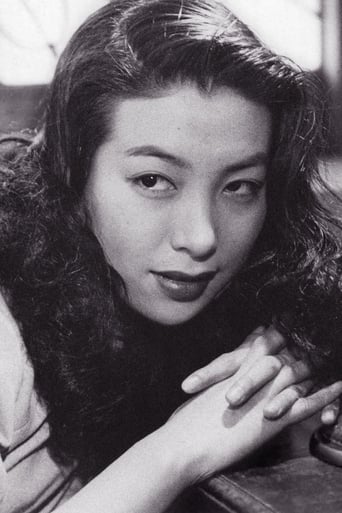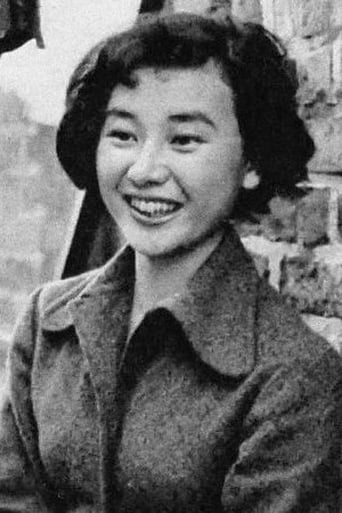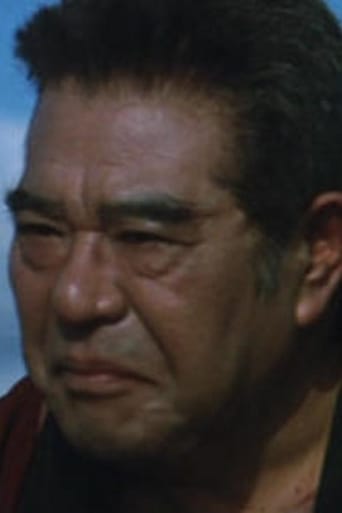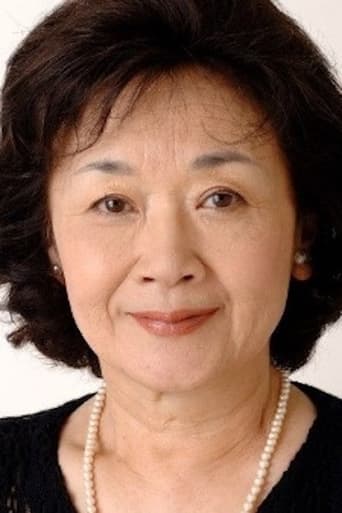Cubussoli
Very very predictable, including the post credit scene !!!
Doomtomylo
a film so unique, intoxicating and bizarre that it not only demands another viewing, but is also forgivable as a satirical comedy where the jokes eventually take the back seat.
Kien Navarro
Exactly the movie you think it is, but not the movie you want it to be.
Fleur
Actress is magnificent and exudes a hypnotic screen presence in this affecting drama.
Osmosis Iron
If you value visual style, good folk tales(of horror) and don't shy away from graphic scenes and unsettling themes, this movie needs to enter your watch list now! This collection of Japanese folk tales has been brought to life with sublime style! Everything from visuals, score, atmosphere and pacing is crafted stupendously to fit the story and maximize the impact each tale provides. I'd say the visuals alone are worth the watch, but the stories are also great! See for yourself, and be happy you didn't miss this gem!
Andres-Camara
I assume that for them these stories will be known and nothing would collide, I half of the film had to be thinking that he wanted to tell me. While it is true that I am very analytical and when things are abstract I miss a bit. But this film for me is very abstract and that pulls me out.Finally I would say that I do not think it is bad as other films, it is done seriously, but its ingredients I do not like. So for my taste I do not approve.Spoiler: This is what you ask me when I finish watching the movie. It is a paranoia of the director or it is me who has become such a dog that I have been lost.You're watching the movie and you do not know if it's so badly made that it looks like theater or that they did not know how to do it better, but if it was so, it should have been all like that, not just part of the story. I imagine that being Japanese cinema, I will not understand their ways of seeing things, their stories, their times, because if, as always this cinema, it is not that it is slow, it is that it does not know the word ellipsis. A fantastic wardrobe that if, as always and some actors, also as always overacted, there will be who loves, I find it heavy.If it were not because it happens and it seems to be theater, the photograph would be very beautiful, but when it happens, it happens to be theater, the problem is that we are watching cinema. It is like the address, luckily it is not a sum of fast planes, but a sum of generals does not say much either.I assume that for them these stories will be known and nothing would collide, I half of the film had to be thinking that he wanted to tell me. While it is true that I am very analytical and when things are abstract I miss a bit. But this film for me is very abstract and that pulls me out.Finally I would say that I do not think it is bad as other films, it is done seriously, but its ingredients I do not like. So for my taste I do not approve.
MortalKombatFan1
This horror anthology made by Toho Studios in the 1960's is one of the more beautiful and eerie than it is scary. Based on four Japanese folk tales, the film has an air of artifice about it, using colourful lighting (which changes mid-scene for supernatural effect), fancy period costumes and makeup, and massive set-pieces (wheat fields and show covered forests are reproduced on the stage, an elaborate sea battle is shown against a painted backdrop). It was one of the most expensive movies made in Japan at the time, and it shows. With so much style, it could be said that the film is an exercise in excess, but really, the style lends itself perfectly to each story, and makes the images from these old tales fresh and unique even fifty years on.The first story, "Black Hair" shows a man leaving his wife to pursue wealth in the city by re-marrying the daughter of rich clan. He is happy at first, but when he thinks back about the woman he loved which he abandoned, revisiting their old abandoned homestead haunts him, literally. In "The Woman and the Snow", two men are stuck in a snow storm, and after his partner freezes to death at the hands of spirit in the form of a woman, he sees her and is spared. She tells him to never speak of seeing her to anyone and he can live. He does for a time, and meets a girl in a nearby village who looks suspiciously like her, only to fall in love with her and raise a family. After an intermission, the longest segment, "Hoichi, the Earless" follows. A blind minstrel, Hoichi, plays a song on the biwa about a fierce sea battle between two clans that ends in the death of a child emperor and his servants, who kill themselves by jumping overboard, rather than being captured by the enemy. Later, Hoichi is called upon by a ghost of the clan to come up upon a mountain top and sing their story to them forever. His disappearance from the monastery is noticed, and some monks are sent out to find him.The final story, "In a Cup of Tea", is an unfinished tale that acts as a coda to the film, being about an writer that must finish a story in time for his publisher and writes one about a man who drinks a cup of tea with the face of person in it. The person in the tea comes to life and visits him at his home over several nights, once by himself and then another time sending his guards. Only the tea drinking man can see the apparitions, which disappear and reappear every time he strikes them in fear. Does he go mad in the end? It is never said. It shouldn't work as an ending, but it does.Each tale acts as a sort of morality play, warning against the dangers of following strangers, or being mislead by women. They're deeply entrenched in folklore and eastern mysticism, and the grandiose camera work and haunting score by Toru Takemitsu make "Kwaidan" a very fine, if stately paced, ghost story anthology. The best segment is "Hoichi, the Earless", with its elongated prologue which is entirely sung by the main character, explaining the story to follow. "The Woman and the Snow" is a sort of love story which is beautiful and sort of tragic, and "Black Hair" has a justifiably bitter conclusion, which is also the scariest of the films.
larma7
I thought this was interesting, even if I didn't really love it and I certainly don't think it is any kind of masterpiece. But interesting, sure. It reminded me of "Black Narcissus" (especially when you think of the final 20 minutes of that film!) in how it brings the artificial to life cinematically. Although here, in line with Kobayashi's style, this is a much more quiet and subdued film and its artificialness is played much more self-aware. I imagine viewers who are really interested in audacious and elaborate sets will go bonkers over this. Made up of four short stories, this is a film more of atmosphere and mood, images and sounds. The stories themselves are pretty simplistic, like Japanese folk-lore passed down from generation to generation, so you aren't going to get any complex story-telling out of this. But the filmmaking on display is rather grand. Kobayashi seems to know how to bring things to life, even in the most quiet ways. The slowly moving and zooming camera, the often changing lighting, the extremely minimal but very effective use of music and sound. The dialog is sparse and aside from the occasional narration, it's a work of images and sound blending together. I wasn't a big fan of the last section (although the ending was interesting), but I liked the other sections just fine. Kobayashi's films are usually deliberately paced, but this one is rather glacial, so let that be a warning. There is very little emphasis placed on character or even story. That said it remains quite intriguing for most of the time. I wouldn't say I would was ever scared, but definitely eerie at times. The sharp cracking noises as the camera slowly follows the samurai through the house in the first story. The howling wind and chilling lighting and atmosphere of the second story. The third one was the most drawn out, and really not scary at all, but I thought it had some great sequences -- in particular I loved the visualization of the painting, which was weird but mesmerizing at the same time. All in all, it's a bit of a mixed bag -- at times quite eerie and effective, at times a bit too artificial, and at times a bit dull -- but mostly it is an interesting viewing experience, with tremendous design and style. Long in the tooth, but worth it for one viewing at least. Given that it is told in 4 separate stories, you can even break it up, if you want.








